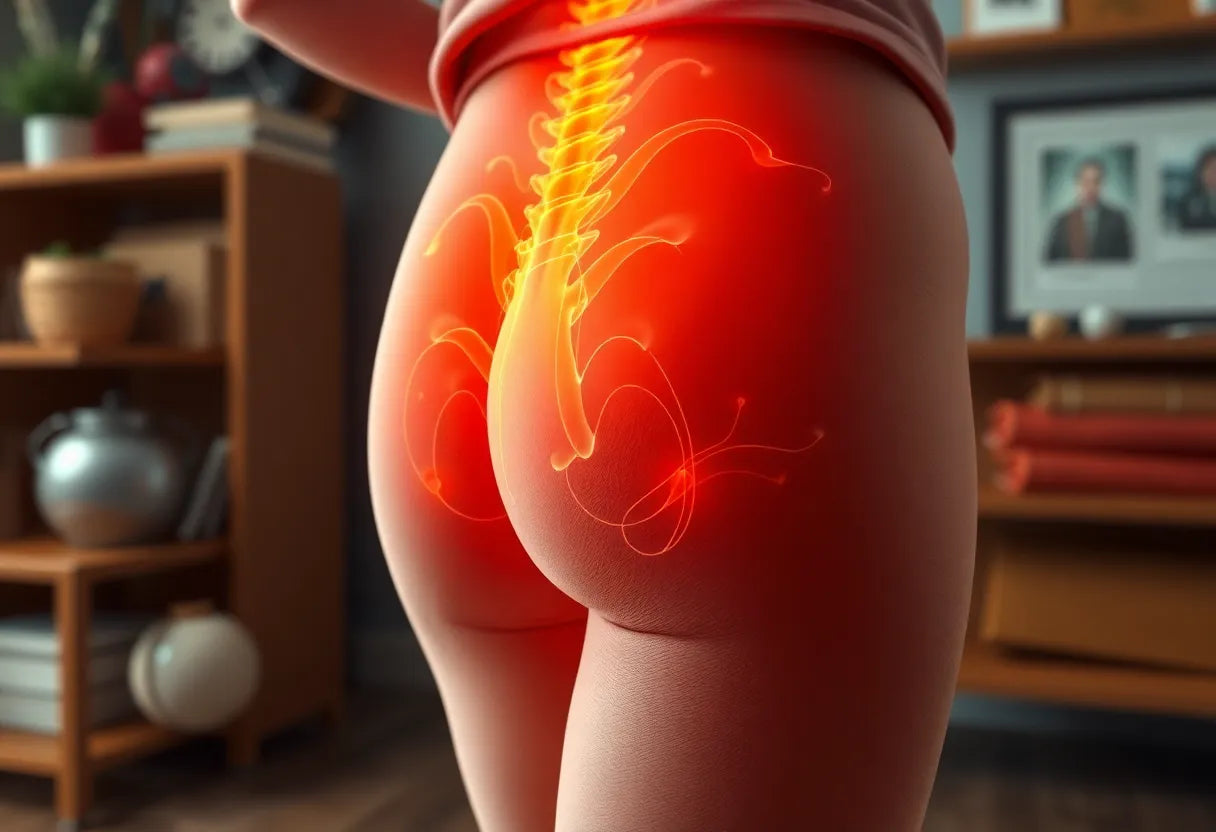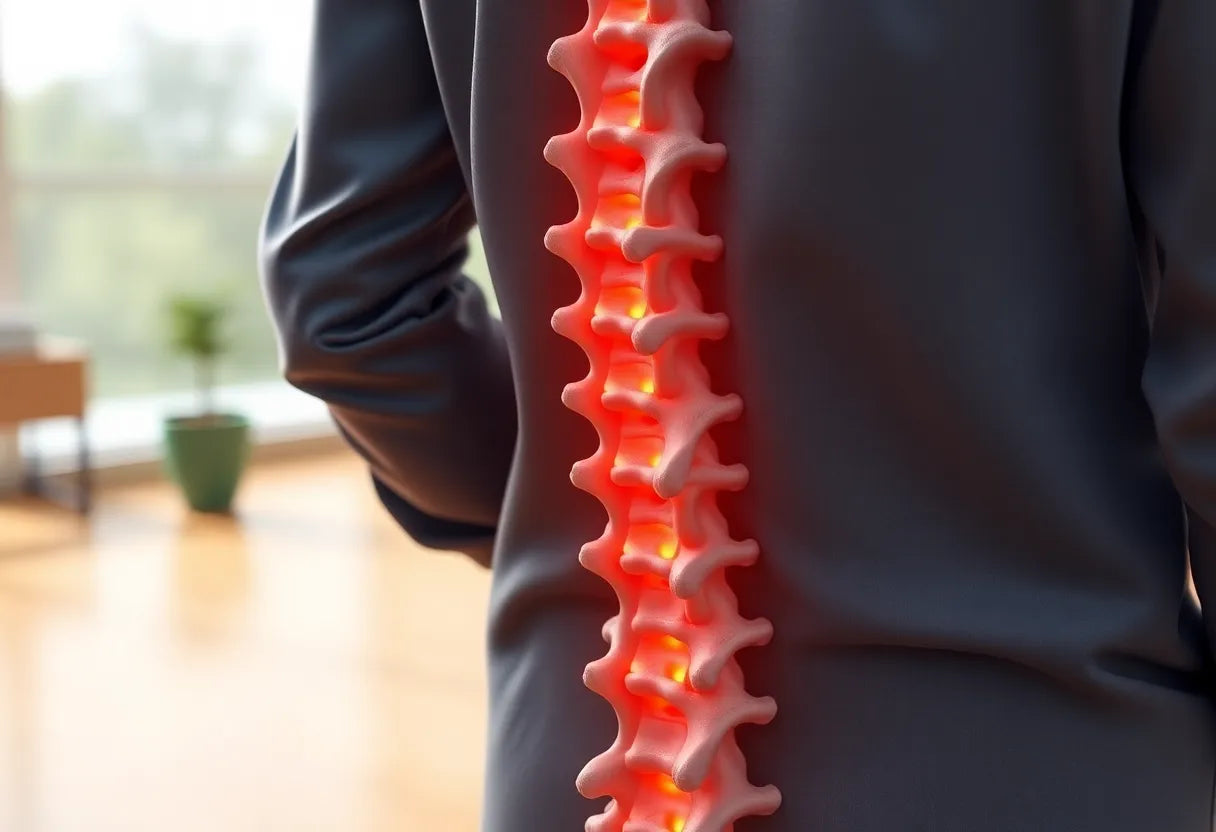The lower back, often overlooked until discomfort strikes, plays a crucial role in the intricate architecture of the human body. As the foundation for movement and a major weight-bearing structure, the lower back is essential for everyday activities ranging from simple walking to complex athletic maneuvers. Its significance is underscored by its ability to support the upper body's weight and facilitate a wide range of motions, making it a vital component of our physical well-being.
understanding the basics of the lower back
Anatomically referred to as the lumbar spine, the lower back consists of five vertebrae labeled L1 through L5. These vertebrae are the largest and strongest of the spinal column, designed to bear the brunt of the body's weight and stress. Understanding the precise location and structure of the lower back is not just academic; it is essential for maintaining overall health and preventing injuries. The lumbar spine's unique design allows it to provide both stability and flexibility, crucial for activities that involve bending, twisting, and lifting.
why location matters
Have you ever wondered why your lower back feels the strain after a long day of sitting or heavy lifting? The answer lies in its anatomical and functional importance. Positioned between the thoracic spine and the sacrum, the lower back is strategically located to absorb and distribute the forces exerted on the body. This positioning makes it susceptible to pain and injury, especially if proper care and ergonomic practices are not followed. Understanding the location of your lower back can help you make informed decisions about posture, movement, and support, ultimately contributing to a healthier spine.
anatomical overview of the lower back
The lower back, or lumbar spine, is strategically located between the thoracic spine above and the sacrum below. This positioning is crucial as it serves as a transition zone, balancing the upper body's weight and transferring it to the lower body. The lumbar spine comprises five vertebrae, labeled L1 to L5, which are the largest and strongest in the spinal column. These vertebrae are separated by intervertebral discs that act as cushions, absorbing shocks and allowing flexibility.
In addition to the vertebrae and discs, the lumbar spine includes facet joints, which connect each vertebra to the next. These joints enable a range of movements while providing stability. Surrounding the lumbar spine are muscles and nerves that play vital roles in movement and sensation. The muscles support the spine and assist in various motions, such as bending and twisting, while the nerves transmit signals between the brain and the lower body.
the lumbar spine's engineering feat
The lumbar spine is a marvel of natural engineering, characterized by its unique lordotic curve. This inward curvature is essential for distributing body weight evenly and reducing stress on the spine. The lordotic curve helps maintain balance and stability, allowing the spine to absorb shocks during activities such as walking, running, or jumping. This curvature also contributes to the spine's flexibility, enabling a wide range of movements without compromising structural integrity.
Moreover, the lumbar spine's design allows it to adapt to different postures and movements. Whether you're sitting, standing, or lifting heavy objects, the lower back adjusts to minimize strain and prevent injury. However, the spine's flexibility and load-bearing responsibilities make it susceptible to injuries, particularly if proper posture and ergonomics are not maintained.
functional significance of the lower back
The lower back plays a pivotal role in supporting the upper body's weight, facilitating movement, and enabling daily activities. It acts as a central hub for motion, allowing us to bend, twist, and lift with ease. This versatility is crucial for performing tasks ranging from simple household chores to complex physical activities.
Despite its strength and adaptability, the lower back is vulnerable to injuries due to its constant use and load-bearing nature. Conditions such as muscle strains, herniated discs, and sciatica are common issues that can arise from overuse, poor posture, or sudden movements. Understanding the lower back's location and function is essential for taking preventive measures to protect this vital area.

Lumbar support belt
Stabilizes and relieves your lower back—adjust for support, ideal for pain or tension.
visual and structural organization
To better understand the lumbar spine's anatomy, visual aids such as diagrams can be invaluable. These illustrations highlight key structures, including the vertebrae, intervertebral discs, facet joints, and surrounding muscles and nerves. By organizing information clearly with subheadings and bullet points, readers can easily grasp the complex anatomy and function of the lower back.
In summary, the lower back's anatomical and functional importance cannot be overstated. Its strategic location and unique design enable it to support the body's weight, facilitate movement, and absorb shocks. However, its load-bearing responsibilities also make it susceptible to injuries, underscoring the need for proper care and ergonomic practices. By understanding the lower back's location and function, individuals can make informed decisions about posture, movement, and support, ultimately contributing to a healthier and more resilient spine.
clinical and practical implications of lower back health
Understanding the clinical and practical implications of lower back health is essential for preventing common conditions such as herniated discs, sciatica, and muscle strains. These ailments often arise due to the lower back's role in supporting the body's weight and facilitating movement. Awareness of these conditions can guide individuals in taking preventive measures to protect this vital area.
Prevention strategies include maintaining proper posture, engaging in regular exercise, and incorporating ergonomic aids into daily routines. Proper posture reduces undue stress on the lumbar spine, while exercises strengthen the supporting muscles, enhancing stability and flexibility. Ergonomic aids, such as lumbar supports, can help maintain spinal alignment, especially during prolonged periods of sitting or standing.

Men's Posture Shirt™ - Black
Patented shirt that supports posture and relieves tension and pain in your back.
importance of ergonomics for lower back care
The anatomical understanding of the lower back underscores the importance of ergonomics in daily life. Ergonomic products, like lumbar supports and adjustable chairs, are designed to align the spine correctly, reducing the risk of injury and discomfort. These aids are particularly beneficial in environments where individuals spend long hours sitting, such as offices.
By integrating ergonomic solutions, individuals can maintain the natural curvature of the lumbar spine, known as the lordotic curve, which is crucial for weight distribution and shock absorption. This alignment not only prevents strain but also enhances comfort and productivity.
frequently asked questions
Q1: What is the most common cause of lower back pain?
A: Lower back pain is often caused by muscle strain, poor posture, or degenerative conditions such as arthritis. These factors can lead to discomfort and reduced mobility, highlighting the need for preventive measures and proper care.
Q2: How can I prevent lower back injuries?
A: To prevent lower back injuries, engage in regular exercise, maintain a healthy weight, practice proper lifting techniques, and use ergonomic supports when sitting for long periods. These practices help strengthen the lower back and reduce strain.
Q3: Why does my lower back hurt after sitting for a long time?
A: Prolonged sitting can lead to poor posture and increased pressure on the lumbar spine, causing discomfort and pain. It is important to take regular breaks, stretch, and use ergonomic seating to alleviate this pressure.
Q4: Are there specific exercises to strengthen the lower back?
A: Yes, exercises like planks, bridges, and pelvic tilts can help strengthen the muscles supporting the lower back. These exercises enhance stability and flexibility, reducing the risk of injury.
Q5: When should I see a doctor for lower back pain?
A: Consult a healthcare professional if the pain is severe, persistent, or accompanied by symptoms like numbness or weakness in the legs. Early intervention can prevent further complications and aid in effective treatment.
In conclusion, understanding the lower back's anatomical and functional importance is crucial for maintaining its health and preventing injuries. By incorporating ergonomic solutions and engaging in preventive practices, individuals can protect their lower back, ensuring a healthier and more resilient spine.
Kilder
- Spine-Health. (n.d.). "Understanding Lower Back Anatomy."
- Physio-Pedia. (n.d.). "Lumbar Anatomy."
- University of Maryland Medical Center. (n.d.). "Anatomy & Function."
- Don Park MD. (n.d.). "Lumbar Spine Anatomy."
- Brian Karamian MD. (n.d.). "Lumbar Spine Anatomy."
- NCBI. (n.d.). "Lumbar Spine Anatomy."
- Globus Medical. (n.d.). "Anatomy of the Spine."
- University of Rochester Medical Center. (n.d.). "Spine Anatomy."
- Mainstay Medical. (n.d.). "Lumbar Spine Anatomy."


















